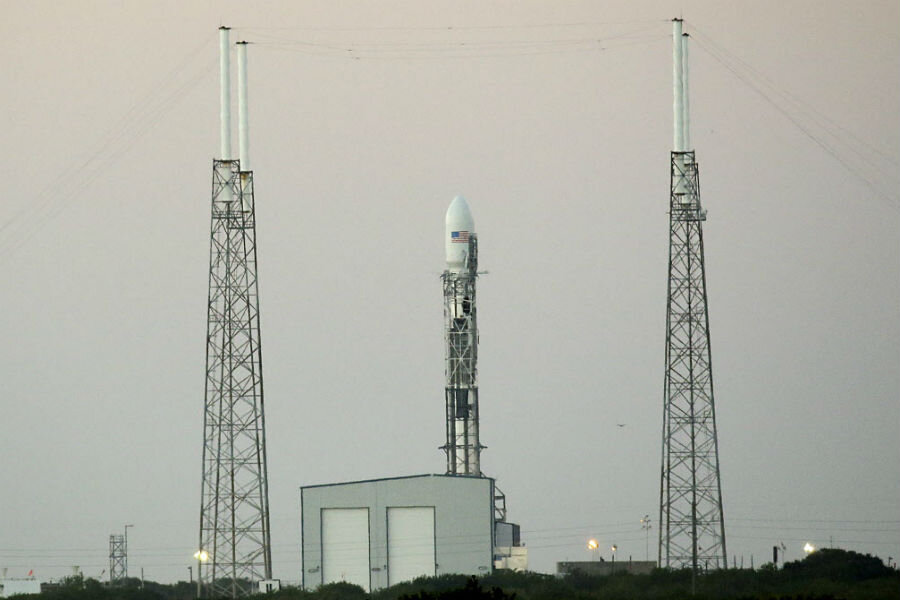SpaceX delays deep-space observatory launch until Tuesday
Loading...
| CAPE CANAVERAL, Fla.
A deep-space observatory has to wait yet another day before flying.
SpaceX called off Sunday evening's launch attempt because of trouble with the Air Force rocket-tracking radar. The company targeted Monday, but decided to wait until Tuesday for better weather.
That gives SpaceX time to replace a video transmitter on the first-stage booster of the Falcon 9 rocket. Following liftoff, the leftover booster is supposed to flip around and aim for a platform floating off the Florida coast. The landing test has been tried once before, without success.
Former Vice President Al Gore was present for Sunday's try.
Gore came up with the idea for a spacecraft that constantly observes Earth back in the 1990s, but the program was canceled and the satellite shelved. The Deep Space Climate Observatory is a refurbished version through the combined effort of NASA, the National Atmospheric and Oceanic Administration, or NOAA, and the Air Force.
Gore noted the launch delay on Twitter, and quipped, "After 17 years, that's nothing."
The $340 million mission dubbed DSCOVR (pronounced discover) involves sending the observatory to a point 1 million miles from Earth, and 92 million miles from the sun, where the gravity field is stabilized. From there, the spacecraft will monitor solar outbursts and provide advance warnings to protect orbiting craft, airplanes and power stations from incoming geomagnetic storms.
That position also will allow the observatory to continuously view the sunlit portion of Earth in its entirety. A steady stream of images will be available online to the public.
SpaceX has a platform stationed 370 miles offshore that will serve as the landing pad for the fly-back booster. The barge had to be repaired after the first touchdown attempt, on Jan. 10, ended in a fireball.
SpaceX chief Elon Musk wants to eventually refurbish and reuse his company's rockets to save money and time.
The California-based company has a contract with NASA to deliver cargo to the International Space Station and, in another couple years, astronauts as well.
On Tuesday, the Dragon capsule that's attached to the space station will undock and return to Earth with science samples, broken spacesuit parts and other unneeded gear. SpaceX is the only station supplier that can bring back items intact; all other unmanned cargo ships burn up during re-entry and, as a result, are stuffed with trash.
Splashdown will be in the Pacific off the Southern California coast.







